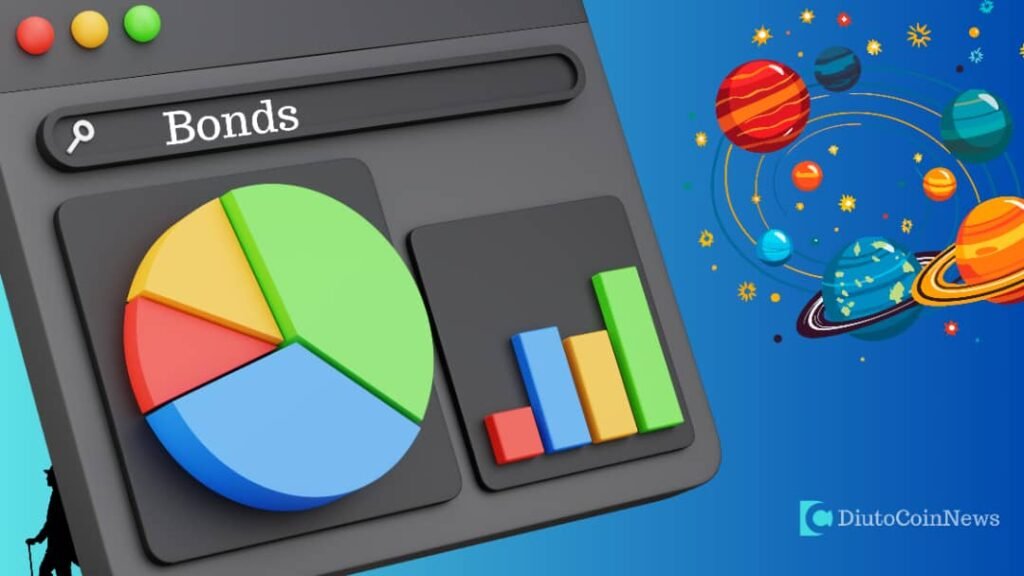[wpcrypto_grid]
What is Ethereum.
First of all, Ethereum is a decentralized system, which means it is not controlled by any single governing entity. An absolute majority of online services, businesses and enterprises are built on a centralized system of governance. This methodology has been applied for centuries and has been seen to lack efficiency,but it’s still recommendable when the parties don’t show that they can trust themselves.
A centralized approach means single-entity control, but it also means a single point of failure, which makes apps and online-servers utilizing this system extremely vulnerable to hacker attacks and even power outages. Moreover, most platform s require details from their clients. From there, it can be easily stolen by the company itself, its rogue workers or hackers.
Ethereum, being a decentralized system, is fully autonomous and is not controlled by anyone at all. It has no central point of failure, as it is being run from thousands of volunteers’ computers around the globe, which means it can never go offline.
Secondly, it is important to understand that even though constantly compared to each other, Ethereum and Bitcoin are two completely different projects with entirely different goals. Bitcoin is the first ever cryptocurrency and a money-transfer system, built on and supported by a distributed public ledger technology called the Blockchain.
Who created Ethereum
In late 2013, Vitalik Buterin described his idea in a white paper, which he sent out to a few of his friends, who in turn sent it out further. As a result, about 30 people reached out to Vitalik to discuss the concept. He was waiting for critical reviews and people pointing out critical mistakes in the concept, but it never happened.
The project was publicly announced in January 2014, with the core team consisting of Vitalik Buterin, Mihai Alisie, Anthony Di Iorio, Charles Hoskinson, Joe Lubin and Gavin Wood. Buterin also presented Ethereum on stage at a Bitcoin conference in Miami, and just a few months later the team decided to hold a crowdsale of Ether, the native token of the network, to fund the Blockchain technology.
Is it a cryptocurrency?
By definition, Ethereum is a software platform that aims to act as a decentralized Internet as well as a decentralized app store. A system like this needs a currency to pay for the computational resources required to run an application or a program. This is where ‘Ether’ comes into play.
Ether is a digital bearer asset and it doesn’t require a third party to process the payment. However, it doesn’t only operate as a digital currency, it also acts as ‘fuel’ for the decentralized apps within the network. If a user wants to change something in one of the apps within Ethereum, they need to pay a transaction fee so that the network can process the change.
The transaction fees are automatically calculated based on how much ‘gas’ an action requires. The amount of required fuel is calculated based on how much computing power is necessary and how long it will take to run.
Is Ethereum like Bitcoin?
Ethereum and Bitcoin might be somehow similar when it comes to the cryptocurrency aspect, but the reality is that they are two completely different projects with completely different goals. While Bitcoin has established itself as a relatively stable and the most successful cryptocurrency to date, Ethereum is a multipurpose platform with its digital currency Ether being just a component of its smart contract applications.
Even when comparing the cryptocurrency aspect, the two projects appear to be vastly different. For instance, Bitcoin has a hard cap of 21 mln Bitcoins that can ever be created, while a potential supply of Ether can be practically endless. Moreover, Bitcoin’s average block mining time is 10 minutes, whereas Ethereum’s aims to be no more than 12 seconds, which means quicker confirmations.
Another major difference is that these days successful Bitcoin mining requires tremendous amounts of computing power and electricity and is only possible if using industrial-scale mining farms. On the other hand, Ethereum’s proof-of-work algorithm encourages decentralized mining by individuals.
Perhaps the most important difference between the two projects is that Ethereum’s internal code is Turing complete, which means that literally everything can be calculated as long as there is enough computing power and time to do so. Bitcoin doesn’t have this capability. While a Touring complete code provides Ethereum users with practically limitless possibilities, its complexity also means potential security complications.
Ethereum against Bitcoin
Ethereum took the technology behind Bitcoin and substantially expanded its capabilities. It is a whole network, with its own Internet browser, coding language and payment system. Most importantly, it enables users to create decentralized applications on Ethereum’s Blockchain.
Those applications can either be entirely new ideas or decentralized reworks of already existing concepts. This essentially cuts out the middleman and all the expenses associated with the involvement of a third party. For example, the only profit that comes from users ‘liking’ and ‘sharing’ their favorite musician’s posts on Facebook is generated from an advertisement placed on their page and it goes directly to Facebook. In an Ethereum version of such social network, both the artists and the audience would receive awards for positive communication and support. Similarly, In a decentralized version of Kickstarter, you won’t be getting just some artifact for your contribution to the company, you will be receiving a part of the company’s future profits. Finally, Ethereum-based applications will remove all sorts of payments to third parties for fascinating any kind of services.
In short, Ethereum is a public, open-source, Blockchain-based distributed software platform that allows developers to build and deploy decentralized applications.
As it was mentioned before, Ethereum is a decentralized system, which means it utilizes a peer-to-peer approach. Every single interaction happens between and is supported only by the users taking part in it, with no controlling authority being involved.
The entire Ethereum system is supported by a global system of so-called ‘nodes.’ Nodes are volunteers who download the entire Ethereum’s Blockchain to their desktops and fully enforce all the consensus rules of the system, keeping the network honest and receiving rewards in return.
Those consensus rules, as well as numerous other aspects of the network, are dictated by ‘smart contracts.’ Those are designed to automatically perform transactions and other specific actions within the network with parties that you don’t necessarily trust. The terms for both parties to fulfill are pre-programmed into the contract. The completion of these terms then triggers a transaction or any other specific action. Many people believe that smart contracts are the future and will eventually replace all other contractual agreements, as the implementation of smart contracts provides security that is superior to traditional contract law, reduce transaction costs associated with contracting and establish trust between two parties.
Moreover, the system also provides its users with the Ethereum Virtual Machine (EVM), which essentially serves as a runtime environment for smart contracts based on Ethereum. It provides users with security to execute an untrusted code while ensuring that the programs don’t interfere with each other. EVM is completely isolated from the main Ethereum network, which makes it a perfect sandbox-tool for testing and improving smart contracts.
They also provides a token we know as “Ether”
Ethereum and Bitcoin…….. Are they synonymous?
Ethereum and Bitcoin might be somehow similar when it comes to the cryptocurrency aspect, but the reality is that they are two completely different projects with completely different goals. While Bitcoin has established itself as a relatively stable and the most successful cryptocurrency to date, Ethereum is a multipurpose platform with its digital currency Ether being just a component of its smart contract applications.
Even when comparing the cryptocurrency aspect, the two projects appear to be vastly different. For instance, Bitcoin has a hard cap of 21 mln Bitcoins that can ever be created, while a potential supply of Ether can be practically endless. Moreover, Bitcoin’s average block mining time is 10 minutes, whereas Ethereum’s aims to be no more than 12 seconds, which means quicker confirmations.
Another major difference is that these days successful Bitcoin mining requires tremendous amounts of computing power and electricity and is only possible if using industrial-scale mining farms. On the other hand, Ethereum’s proof-of-work algorithm encourages decentralized mining by individuals.
Perhaps the most important difference between the two projects is that Ethereum’s internal code is Turing complete, which means that literally everything can be calculated as long as there is enough computing power and time to do so. Bitcoin doesn’t have this capability. While a Touring complete code provides Ethereum users with practically limitless possibilities, its complexity also means potential security complications.
Ethereum (mode of operation)
As it was mentioned before, Ethereum is based on Bitcoin’s protocol and its Blockchain design but is tweaked so that applications beyond money systems can be supported. The two Blockchains’ only similarity is that they store entire transaction histories of their respective networks, but Ethereum’s Blockchain does a lot more than that. Besides the history of transactions, every node on Ethereum network also needs to download the most recent state, or the current information, of each smart contract within the network, every user’s balance and all the smart contract code and where it’s stored.
Every state of Ethereum consists of millions of transactions. Those transactions are grouped to form ‘blocks,’ with each and every block being chained together with its previous blocks. But before the transaction can be added to the ledger, it needs to be validated, that goes through a process called mining.
Mining is a process when a group of nodes apply their computing power to completing a ‘proof of work’ challenge, which is essentially a mathematical puzzle. The more powerful their computer is, the quicker it can solve the puzzle. An answer to this puzzle is in itself a proof of work, and it guarantees the validity of a block.
What can Ethereum be used for? (Advantage)
First and foremost, Ethereum allows developers to build and deploy decentralized applications. Moreover, any centralized services can be decentralized using the Ethereum platform. The potential of Ethereum platform for building apps not limited by anything other than the creators’ creativity.
Decentralized applications have a potential of changing the relationship between companies and their audiences completely. These days there are a lot of services that charge commission fees for simply providing an escrow service and a platform for users to trade goods and services. On the other hand, Ethereum’s Blockchain’s can enable customers to trace the origins of product they’re buying, while the implementation of smart contracts can ensure safe and fast trading for both parties without any intermediary.
The Blockchain technology itself has a potential of revolutionizing web-based services as well as industries with long-established contractual practices. For example, an insurance industry in the US possesses more than $7 bln inclined life insurance money, which can be redistributed fairly and transparently using Blockchain. Moreover, with the implementation of smart contracts, clients can be able to simply submit their insurance claim online and receive an instant automatic payout, considering that their claim met all the required criteria.
Essentially, the Ethereum Blockchain is capable of bringing its core principles – trust, transparency, security and efficiency – into any service, business or an industry.
Ethereum can also be used to create Decentralized Autonomous Organizations (DAO), which operate completely transparently and independently of any intervention, with no single leader. DAOs are run by programming code and a collection of smart contracts written on the Blockchain. It is designed to eliminate the need for a person or a group of people in complete and centralized control of an organization.
DAOs are owned by people who purchased tokens. However, the amount of purchased tokens doesn’t equate equity shares and ownership. Instead, tokens are contributions that provide people with voting rights.
What apps were developed on Ethereum? (Advantage)
Ethereum has a potential of opening up the world of decentralized apps even for people without any technical background. If this happens, it can become a revolutionary leap for Blockchain technology that will bring it closer to mass-adoption. Currently, the network can be easily accessed through its native Mist browser, which provides a user-friendly interface as well as a digital wallet for storing and trading Ether. Most importantly, users can write, manage and deploy smart contracts. Alternatively, Ethereum network can be accessed through a MetaMask extension for Google Chrome and Firefox.
The Ethereum platform has the potential of profoundly disrupting hundreds of industries that currently depend on centralized control, such as insurance, finance, real estate and so on. Currently, the platform is being used to create decentralized apps for a broad range of services and industries. Below is a list of some of the most noticeable ones.
Gnosis — A decentralized prediction market that enables users to vote on anything from the weather to election results.
EtherTweet — This application takes its functionality from Twitter, providing users with a completely uncensored communication platform.
Etheria — It feels and looks very much like Minecraft, but exists entirely on the Ethereum Blockchain.
Weifund — An open platform for crowdfunding campaigns that implements smart contracts.
Augur — An open-source prediction and forecast market that rewards correct predictions.
Alice — A platform that aims to bring transparency to social funding and charity through Blockchain technology.
Bitnation — The World’s First Virtual Nation, a Blockchain jurisdiction. It contains many of the same functions as a traditional nation, such as insurance, education, ID cards, diplomacy programmes, including ones for ambassadors and for refugees and many many more.
How to get Ether
There are two ways of obtaining it:Buying and mining.
The most common and perhaps the most convenient way of buying Ether is buying it on exchanges. All you need to do is find an exchange that trades in Ether and operates within your jurisdiction, set up an account and use either your bank account, wire transfer or in some cases even your bank card to buy Ether tokens. Those will then need to be stored in a wallet, which can be provided by an exchange itself.
Alternatively, you can obtain Ether through peer-to-peer trading, paying for it with any agreed upon currency, including Bitcoin and other cryptocurrencies. This can be done both online and in-person. Peer-to-peer trading is rather popular among Bitcoin users. However, due to the virtually unlimited supply of Ether tokens and the Ethereum platform not putting complete user anonymity at the forefront of the system, Ether is usually obtained via exchanges.
Another way of getting Ether tokens is by mining them. Mining Ethereum uses proof-of-work, which means that miners contribute their computing power to solve a complex mathematical problem in order to ‘seal-off’ and confirm a block of actions within the network. Miners who manage to successfully complete this task receive a reward for every block mining.
Disadvantages of Ethereum
Despite the fact that smart contracts are meant to make the network fault-proof, they can only be as good as the people writing the code for them. There is always room for human error, and any mistake in the code might get exploited. If that happens, there is no direct way to stop a hacker attack or an exploitation of said mistake. The only possible way of doing so would be to reach a consensus and rewrite an underlying code. However, this goes completely against the very essence of the Blockchain, as it is supposed to be an unchangeable and immutable ledger.
‘The DAO,’ which is a name of a particular DAO launched on April 30, 2016, was attacked and more than 3.6 mln Ether tokens were stolen from it. The attacker exploited a ‘recursive call bug’ in the code, essentially just draining the funds from DAO into a ‘child DAO,’ that had the same structure as The DAO. The loss of a massive chunk of The DAO’s funding wasn’t the only consequence of the attack, as it basically undermined the users’ trust in the whole Ethereum network, with Ether’s value falling from over $20 to under $13.
Where to buy and sell Ether
Exchanges
Poloniex
One of the world’s leading cryptocurrency exchange that offers a variety of currency pairings and advanced tools and data analysis.
Fast account creation, feature rich, high-volume trading, user-friendly, low trading fees, open API.
Worldwide.
Binanace
One of the first generation exchanges that has built a loyal customer base.
Good reputation, high-level security, low transaction fees, good for large transactions.
Currently the highest volume of Cryptocurrency Trading Worldwide.
Worldwide.
Good reputation, good mobile product, credit card support, beginner friendly, good exchange rates, supported worldwide.
Bittrex
A USA-based and fully compliant exchange with extensive digital currency support.
Security and compliance, user-friendly design, support of 190+ cryptocurrencies, great analytics.
Coinmama
A veteran broker platform where Ether and Bitcoin can be bought using credit card or cash via MoneyGram and the Western Union.
Good reputation, beginner friendly, great interface, big range of payment options, fast transaction time.
Kraken
The largest exchange in Euro volume and liquidity and is a partner in the first cryptocurrency bank.
Good reputation, good exchange rates, low transaction fees, minimal deposit feet, great user support, secure..
GDAX
A subsidiary of Coinbase that offers a secure and easy way for traders to buy and sell digital assets online across nine trading pairs.
Security, reasonable Fees, beginner friendly, nine trading pairs.
US, Europe, UK, Canada, Australia and Singapore.
ShapeShift
A leading exchange that supports a variety of cryptocurrencies.
Good reputation, beginner friendly, dozens of cryptocurrencies available for exchange, fast, good prices.
Future of Ethereum
Despite the fact that Ethereum, much like Bitcoin, has been around for several years, it only just started gaining mainstream media’s and general public’s attention. A lot of experts agree that it is a disruptive technology that is set to not only completely change the way Internet works but also revolutionize services and industries that have been existing for hundreds of years.
Ether on a treadmill
Vitalik Buterin, the creator of Ethereum, is being very careful and modest with his predictions. In a recent interview, he stated that he intends to keep Ethereum the leading Blockchain-related platform, focusing on technical issues and security improvement in the new future.
Balaji Srinivasan, a CEO of 21.co, has recently voiced his firm belief in Ethereum still being around in five to 10 years time. Peter Smith, founder of Blockchain, described Ethereum’s infrastructure applications as ‘fascinating’ and mentioned that the platform has a very strong shot at overhauling title insurance, which involves policies related to real estate, as just one example.
Overall, opinions on the future of Ethereum among cryptocurrency experts are generally positive. However, there are many old-school financial experts who, despite the extraordinary success and relative stability of both Bitcoin and Ether, as well as the undeniable importance of technologies behind the projects, are still predicting their impending downfall.
People to follow
Ethereum — Official Twitter of the Ethereum Project.
Vitalik Buterin — Creator of Ethereum.
Lefteris Karapetsas — A University of Tokyo Graduate, developer based in Berlin.
Alex van de Sande — Designer, developer, member of the Ethereum Foundation
Jeff Ehh — Ethereum co-founder.
Anthony Diiorio — CEO & Founder of Decentral & Jaxx, Co-founder of Ethereum.
Authored by Obinwa Chinedu Callistus.
Discover more from DiutoCoinNews
Subscribe to get the latest posts sent to your email.















